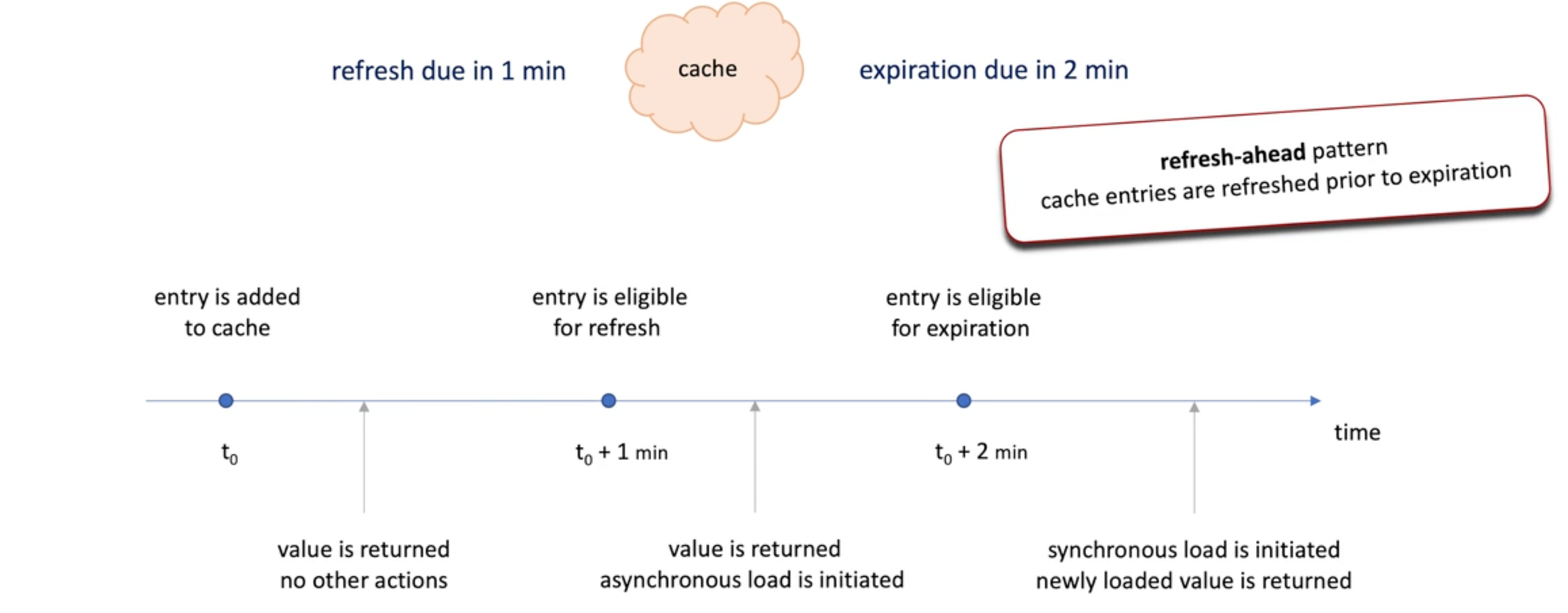How to improve system performance with caching
Duplication cache
Local vs external cache
Adding data to cache(explicitly, implicitly)
Cache data eviction(size-based, time-based, explicit)
Expiration vs refresh
-
Local(private)cache: same machine as the app itself. Google Guava Cache. Simple and fast but not scalable due to the size limit. And zero fault tolerance and durability.
-
External (shared/remote) cache: external storage. Redis , Memecached. Scalable(all servers capacity, and fault tolerant and durable(if support replication)
-
Hash table persists all things at one time until they are explicitly removed. Cache has limit size and evicts entry automatically.
-
Add data into cache :
- Explicitly : put
- Implicitly: when getting data it's not in cache, it will be added to the cache
- Synchronously: the caller waits for the data to be loaded from data store
- Async: the get call returns immediately, the background has a thread to run the refresh job.
-
Cache eviction:
- Size-based : Eviction policies: LRU, LFU
- Time-based : TTL
- Passively: when entry is accessed, if found expired, evicted
- Actively: background thread runs at regular intervals
- Explicitly remove
-
Expiration vs refresh(update without eviction)
- Expiration: sync manner. When an entry expired, app waits for the new entry to be loaded from data store.
- Refresh: existing entry is returned and new value is loaded async in the background.
- Refresh is especially good for hot keys: hot keys are keys that are read very frequently. Refresh won't block the read.
-
A example : a cache, refresh time 1, expiration time 2 min :

-
Return to the messaging system: duplicate messages (how happened->the message is accepted and processed by the broker but the ack is somehow lost, send producer thinks the send failed so to send again the same message)
- There will be a sequence key or duplication id in the metadata. If not provided in the message, broker may generated itself for the message based on something.
- If broker hasn't seen the message(by checking the duplication id), then the message is accepted;
- Otherwise , it's duplicated and it's not accepted.
Metadata cache
Cache-aside pattern
Read-through and write though patterns
Write-behind(write-back) pattern
- Previous problem focus on the cache itself how to deal with data;
- Now we are focusing another typical problem : how to keep the data store and cache their data consistent.
- Who might be in charge of this job(maintain consistency)? - application(use both stores) or cache .
- Application manage: cache aside. -> widely used
- Application looks for a entry in the cache , if there(cache hit), return immediately;
- Else if not there(Cache miss): it will fetch data from the data store;
- Put the new entry into cache.
- Not suitable for latency-critical systems->Every cache miss results in three round trips
- Stale data when data changes frequently in the data store -> cache doesn't know data store change (mitigated by setting expiration time on cache entries)
- Prone to cache stampede behaviors -> multiple threads simultaneously query the same entry from the data store (due to cache miss) -> a problem to large scale system
- Cache in charge -> read and writes go through cache.
- Read through -> cache reads data from data store in case of cache miss. (sync manner)
- Write through -> modification to the cache are written back to the data store. (sync)
- Advantage :
- simplify the data access code of application ;
- help to mitigate the cache stampede problem -> it only allows one request to read data from data store , others are waiting list, once the data is fetched, it send the response to the clients whose request is on the waiting list. -> request coalescing
- Cons:
- Cache may contains al ts of rarely used at ( problem for small caches )
- Cache becomes critical component (if fails, system down)
- The sync manner is more reliable since it waits for the data to come back and if it's not back , some log or exception can be recorded.
- But if the system prioritize performance, there is a async way to maintain the consistency. -> write behind pattern
- The data is write to cache and response to client immediately. The data in cache is queued and write to data store later.
- This improve performance (higher throughput and lower latency ) but may lose data if cache crashes -> can be mitigated by cache replication.
- Messaging system : we store metadata (max size of the queue.... Message retention period...)
- Store in the embedded storage
- Also has a in memory cache for fast data access. -> we need the metadata to validate the message each time the message comes.
- We can implement the cache using read through and write through.